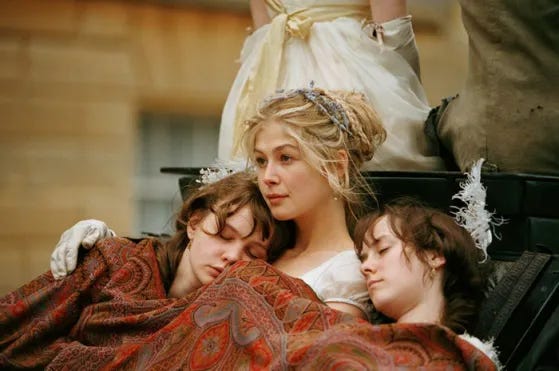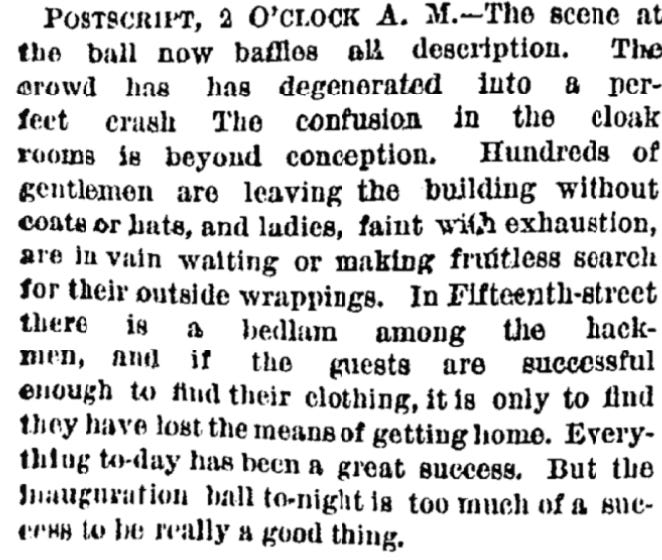Mark Slavonia | August 21, 2025
The 19th Century Party People Edition
On late nights, early mornings, and carriages at dawn.
Mark Slavonia (MJS) is an investor, a pilot, and an avid cyclist. He’s written plenty of WITIs, most recently about tall trees, Tuesdays, and the world’s most dangerous toy. He posts other things that are interesting on his website.
Mark here. It’s tempting to assume that modern conveniences like artificial light and speedy transportation would have opened up our nights, and led to later and later socializing. But for formal events, almost the opposite trend has occurred. Over the past 200 years, social events have been creeping earlier and earlier in the evening calendar.
Why is this interesting?
In the 18th and 19th centuries, formal parties and balls began late at night, and ended the next morning. The Regency England dances that feature in Jane Austen’s novels were all-night affairs, beginning around 10 or 11 pm, and continuing until 5 or 6 a.m. (And it was poor form to leave early.) Here’s Austen herself describing a dance she attended:
“We began at ten, supped at one, and were at Deane before five.”
In Austen’s novel Mansfield Park, Sir Thomas spots a guest who is flagging in the wee small hours. He sneaks a discreet peek at his watch and says:
“It is three o'clock, and your sister is not used to these sort of hours.”
An Austen reader might assume these late nights were some sort of Regency aberration. But upper-class parties were midnight events as early as the late 18th century. Here’s the Marquis de Lafayette, commenting on his three weeks in London in 1777.
“We never retire here before five a.m.”
The party was raging in Lafayette’s native France as well. In The Fate of the Day, Rick Atkinson describes the life of Marie Antoinette:
“There was always another ball to attend, usually beginning at midnight and lasting until daybreak”.
High society in the New World copied the European upper class, and imported the tradition of crushingly late parties. Here’s a description of the antebellum Jockey Club Ball in Charleston, South Carolina:
”The ball began at eleven p.m. and ended at six the next morning with dancing and an elaborate banquet.”—‘The Demon of Unrest: A Saga of Hubris, Heartbreak, and Heroism at the Dawn of the Civil War’ by Erik Larson.
Gilded Age New York partied similarly late. The Vanderbilt Ball, hosted on March 26, 1883 by Alva Vanderbilt, started at 11:30 p.m (although, like at the Academy Awards today, guests arrived as early as 10:30 to be seen making an entrance). Dinner was served at 2:00 a.m., and guests returned home as the sun rose at 6:00 a.m.
I’m not certain that it was always this way. In Henry IV, Part II, Shakespeare has Falstaff say, “We have heard the chimes at midnight” to suggest a shared experience of late-night drinking. That implies that in 1600 (or as Shakespeare understood Henry IV’s time, which was 1400), midnight was plenty late. Midnight was also reasonably late in Cinderella - the midnight deadline first appeared in Charles Perrault’s 1697 version of the story. In France in 1697, a young woman would have had a chance to make an impression at a ball by midnight, but by the time of Louis XVI and Marie Antoinette in the 1770s, the party would have just been getting started.
We can track the slow slide back to early evening party times and reasonable bedtimes by looking at the schedules for Presidential inaugural balls, held intermittently in the U.S.A. since 1809. Lincoln’s inaugural balls reflected the late-night spirit of the 19th century, commencing at 10:00pm. Though Lincoln did not stay late, the parties continued until the early morning.
Grant’s first inaugural ball in 1869, a famously overcrowded disaster, also began at 10:00 p.m., with U.S. Grant himself arriving at 10:40. The New York Times reporter on hand memorably sent in this postscript at 2:00 a.m.
McKinley’s 1897 inaugural ball crept forward to 9:00, which was also the start time for Richard Nixon’s 1969’s black-tie event. By the time of Bill Clinton and George W. Bush in the 1990s and 2000s, inaugural balls were commencing at 7:00 p.m. It’s usually a weeknight, after all.
I don’t know how I’d structure my day before an all-night dance that started at 11:00 p.m., and I especially don’t know how I’d manage the day after. It must have been even worse for the many servants, musicians, coachmen, cooks, and cleaners who worked these events. How did they get home, with no carriages to serve them? (MJS)
McKinsey and Ride AI want to hear from you!
Are you an AV industry insider, academic, or working in media? How do you think the robotaxi industry is doing? Where do you think autonomy will be in the next 10 years? Ride AI has partnered with McKinsey for a webinar series, and we want to hear your thoughts! Take our survey below and get a 25% discount for the 2026 Ride AI conference. It takes less than 10 minutes, and results will be shared with all participants.


